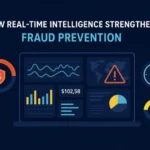
In the data-driven decision-making age, the influence of business analytics on shaping and steering organizational strategies has become increasingly profound. As businesses grapple with vast amounts of data, the role of analytics emerges as a powerful force in extracting meaningful insights and driving informed decisions. From market trends and consumer behavior to operational efficiency and risk management, business analytics has transcended its role as a mere tool and evolved into a strategic imperative. This blog explores the pivotal impact of business analytics on modern enterprises, unraveling how thoughtful data analysis can enhance decision-making processes and empower businesses to stay agile, competitive, and resilient in an ever-evolving market landscape.
Pursuing a Masters in business analytics program provides a comprehensive understanding of the implementation of analytics for informed decision-making. Through structured coursework and hands-on experiences, participants delve into the intricacies of data analysis, interpretation, and utilization. The program equips individuals with the skills to navigate diverse datasets, employ advanced analytics tools, and draw actionable insights. Students gain practical insights into applying analytics methodologies to solve complex business challenges by immersing themselves in real-world case studies and projects.
What is Business Analytics?
Business analytics involves systematically exploring, analysing, and interpreting data to extract valuable insights that drive informed business decisions. By leveraging statistical methods, predictive modeling, and data mining techniques, business analytics empowers organizations to uncover patterns, trends, and correlations within complex datasets. These insights, ranging from customer behavior to market dynamics, profoundly influence strategic planning, resource allocation, and operational efficiency. In an era where data is abundant, business analytics is a critical catalyst, enabling businesses to make smarter, data-driven decisions that enhance competitiveness, mitigate risks, and foster sustained growth in a dynamic and evolving business landscape.
Importance of Data in Business Analytics
The importance of data in business analytics lies in its role as the foundational resource for informed decision-making. Data enables organizations to uncover patterns, trends, and correlations, providing valuable insights into customer behavior, market dynamics, and operational efficiency. Business analytics harnesses this data to drive strategic planning, optimize processes, and enhance overall business performance. In a data-driven landscape, the ability to collect, analyze, and interpret data is crucial for organizations seeking a competitive edge, as it empowers them to make informed decisions, identify opportunities, and mitigate risks with precision and agility.
Types of Data Used in Business Analytics
Business analytics relies on diverse forms of data, each offering distinct insights into various facets of business operations:
Structured Data: Neatly organized information fitting predefined categories, often found in databases and spreadsheets. Examples include sales figures, transaction records, and customer demographics.
Semi-Structured Data: Displays some organization but lacks strict predefined formats, such as JSON files and XML documents. Rich contextual information within this data can be valuable for analytics.
Unstructured Data: Complex and lacking a predefined structure, including text, images, audio, and video content. Extracting insights requires advanced techniques like natural language processing and image recognition, which apply to sources like social media posts and customer reviews.
Role of business analytics enabling Informed Decision-Making
Fostering Informed Decision-Making with business analytics entails a comprehensive application of diverse analytical techniques, delivering pivotal insights into data. These insights empower businesses to make well-informed choices aligned with strategic objectives. The three primary components of business analytics—descriptive, predictive, and prescriptive analytics—each fulfill unique roles in enhancing decision-making.
Leveraging Descriptive Analytics: Descriptive analytics involves analyzing historical data to discern past trends and patterns. Key Performance Indicators (KPIs) act as quantitative measures, offering insights into operations, customer behavior, and market dynamics. Dashboard visualizations of KPIs enable quick assessments, guiding decision-makers to areas needing attention or improvement.
Empowering with Predictive Analytics: Predictive analytics extends understanding from historical data to forecast future trends. Businesses anticipate market shifts, customer preferences, and demand fluctuations by developing models based on historical patterns. For example, predicting customer behavior aids tailored marketing strategies and product offerings, while demand forecasting optimizes supply chains.
Optimizing through Prescriptive Analytics: Prescriptive analytics recommends optimal choices based on multiple variables, culminating in data-driven decision-making. Simulating various scenarios aids risk assessment and strategic planning. Decision-makers explore options and potential consequences, making informed choices grounded in data-derived insights.
Advantages of using business analytics for decision-making
Business analytics empowers decision-makers to ground their choices in factual data and insights, transcending reliance on intuition or assumptions. It facilitates precise decision-making through accurate forecasting, risk assessment, and performance evaluation.
Informed Decision-Making: Business analytics facilitates choices grounded in factual data and insights, minimizing reliance on intuition or assumptions.
Precise Decision-Making: Analytics contributes to accurate forecasting, risk assessment, and performance evaluation, enhancing the precision of decision-making processes.
Proactive Decision-Making: Analysis of historical and current data reveals market trends, customer preferences, and industry shifts, fostering proactive decision-making.
Operational Efficiency: Analytics uncovers inefficiencies in processes, supply chains, and resource allocation, leading to streamlined operations and cost savings.
Customer Insights: By analyzing customer data, businesses gain deeper insights into behaviors, preferences, and needs, enabling better-targeted products and services.
Competitive Advantage: Analytics identifies market gaps, potential niches, and areas for innovation, providing businesses with a competitive edge.
Risk Mitigation: Through data analysis, businesses identify potential risks and uncertainties, enabling the development of strategies to mitigate or navigate these challenges.
Conclusion
The transformative impact of business analytics on decision-making is undeniable. From accurate forecasting to uncovering market trends and enhancing operational efficiency, analytics empowers businesses to make informed choices grounded in data. Pursuing a Master’s in business analytics becomes a pivotal step in comprehending these intricacies, offering a deep dive into analytical techniques and strategic applications. The program equips professionals with the skills to navigate complex data landscapes, providing a nuanced understanding of how analytics shapes effective decision-making. Ultimately, embracing a Master’s in business analytics is an educational pursuit and a strategic investment in mastering the art of steering businesses toward success through data-driven decision-making.

A Step-by-Step Guide to Downloading Your GST Certificate

What Is the Difference Between Bookkeeping and Accounting: A Simple Guide for Small Business Owners

The Ultimate Guide to Commercial Cleaning: Enhancing Workplace Hygiene and Productivity

Onsite Tire Change in Ottawa : Safe Fast & Professional Tire Services

Accelerating drug discovery through the DEL-ML-CS approach

A Step-by-Step Guide to Downloading Your GST Certificate

What Is the Difference Between Bookkeeping and Accounting: A Simple Guide for Small Business Owners

The Ultimate Guide to Commercial Cleaning: Enhancing Workplace Hygiene and Productivity








